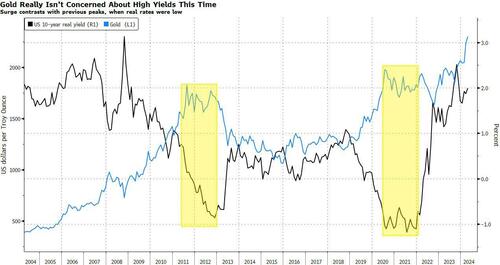CHAMPAIGN, Ill. — Public policies blocked many families of Mexican descent living in the U.S. from accessing vital services such as food and mental health care during the COVID-19 pandemic, even though these communities experienced some of the highest infection and mortality rates.
Thirty-eight perinatal women and mothers of young children were interviewed about the challenges they faced during the pandemic and proposed solutions to better meet the needs of their communities during future large-scale crises in a study led by University of Illinois Urbana-Champaign kinesiology and community health professor Sandraluz Lara-Cinisomo.
Co-authors of the study are molecular anthropologist Amy L. Non of the University of California-San Diego; Kimberly D-Anna-Hernandez, a professor of psychology at Marquette University; and U. of I. graduate student Mary Ellen Mendy and undergraduate students Jessica Avalos and Jacqueline Marquez.
The women in the study discussed the stressors they encountered during the pandemic, including their difficulties accessing mental health treatment, child care and food. Their suggestions and insights were used to identify actionable policies and programs that could help meet the needs of Latino communities during future emergencies.
The participants, who were interviewed between September 2021 and December 2022, were part of a longitudinal study that recruited them from a clinic in San Diego, one of the U.S. cities with large Latino populations of Mexican heritage.
The women were about 36 years old on average. Although about 81% of them were born in Mexico, many had resided in the U.S. for 17 years or more. About 31% reported having an annual household income of less than $21,000, while a similar percentage earned $40,000 or more, according to the study.
Lara-Cinisomo said participants faced complex stressors during the pandemic. Half of the women in the study said their families had challenges obtaining food due to loss of income and subsidies such as school lunches, as well as supply chain shortages and consumer stockpiling.
“While early in the pandemic various federal and state programs and policies were deployed to mitigate people’s risks for exposure and enhance families’ economic security, millions of tax-paying families of Mexican descent and other Latino backgrounds were excluded because of restrictions and exclusions set by those programs,” Lara-Cinisomo said.
The researchers found that more than twice as many Spanish speakers reported food-related issues compared with their English-speaking counterparts.
“Policymakers should consider how language barriers increase the risks of Spanish-speaking families losing out on benefits designed to meet their needs, such as CalFresh,” California’s iteration of the federal SNAP food assistance program for low-income people, Lara-Cinisomo said.
“Communicating food and health and safety information in linguistically appropriate media, such as texts, videos or commercials, is vital to ensure accessibility to people with differing literacy and technological skills and should be carefully considered by policymakers.”
Involving trusted sources in disseminating relevant and critical information was also recommended by the participants. For marginalized communities that have experienced historical discrimination and anti-immigrant propaganda, trust in these sources is vital, Lara-Cinisomo said.
“Research has shown that community engagement is critical in emergency preparedness and increases the likelihood of meeting the needs of marginalized communities,” Lara-Cinisomo said. Accordingly, she and her team recommended developing a contingency plan to train culturally and linguistically competent community health workers to cultivate networks of trusted community members to assist in crisis communication efforts.
Some women discussed feeling anxiety about the uncertainties associated with the pandemic, such as lockdowns and conflicting health information. These feelings were exacerbated by employment disruptions, pregnancy, and food access problems, and their concerns extended to family members residing in other households and those living in Mexico, participants told the researchers.
The majority of those interviewed advocated broadening access to food subsidy programs such as WIC and SNAP to offset income losses and food shortages during large-scale crises, along with providing public awareness campaigns about local food banks and assistance programs.
Even though California provides more services for undocumented immigrants — including paid family leave and one year of emergency coverage with mental health services under Medi-Cal, the state’s Medicaid plan, for pregnant women — caring for their mental health needs was a significant problem for many participants. Fifteen women reported needing mental health care, but twice as many of the English-speaking women mentioned these issues compared with their Spanish-speaking counterparts, the researchers found.
The researchers hypothesized that this difference may have been associated with cultural beliefs, with Spanish-speaking women feeling less comfortable disclosing mental health problems because of stigmatization compared with those who spoke English. Or, it may have been that those who spoke Spanish were more resilient or more concerned about immediate needs such as food assistance, the team said.
Participants recommended broadening access to mental health services for mothers and their families, promoting awareness with providers and patients, and disseminating mental health information and resources through videos and other media and via programs such as WIC.
Many of the women — largely those who spoke only Spanish — reported difficulties obtaining personal protective equipment and sanitization supplies because of shortages, consumer stockpiling, and price gouging, in keeping with other studies that showed low-income and marginalized communities were disproportionately affected.
Although the study sample was small, Lara-Cinisomo said it highlighted critical needs for responsive, culturally appropriate policies and programs to ensure the well-being of Mexican-descent perinatal women and mothers of young children during public health crises.
Lara-Cinisomo discussed the team’s findings and study participants’ recommendations during a virtual Briefing on Perinatal Health and Well-being on April 3 hosted by the journal Health Affairs, which published the study.
Journal
Health Affairs
DOI
10.1377/hlthaff.2023.01492
Method of Research
Survey
Subject of Research
People
Article Title
Solutions from Mexican-descent perinatal women to pandemic-related food, mental health, and health and safety stressors
Article Publication Date
1-Apr-2024
COI Statement
The authors disclose no conflicts of interest.











































